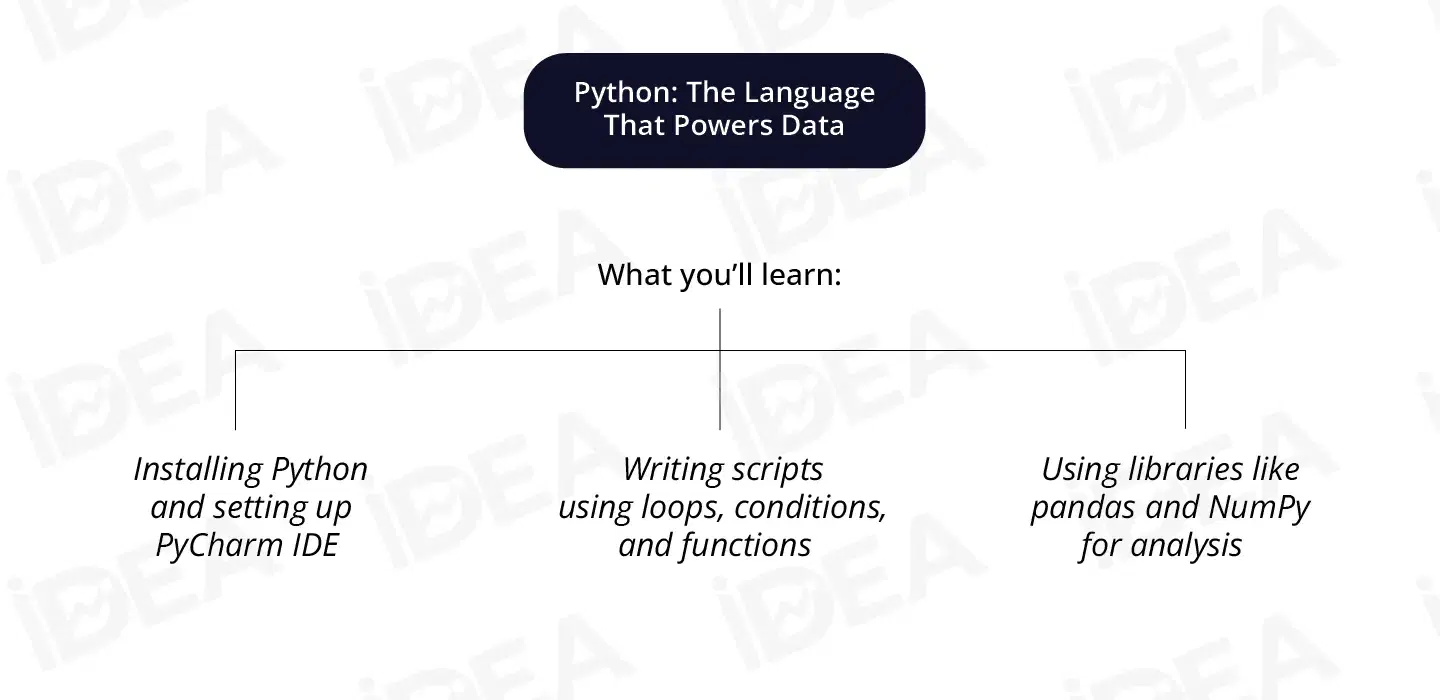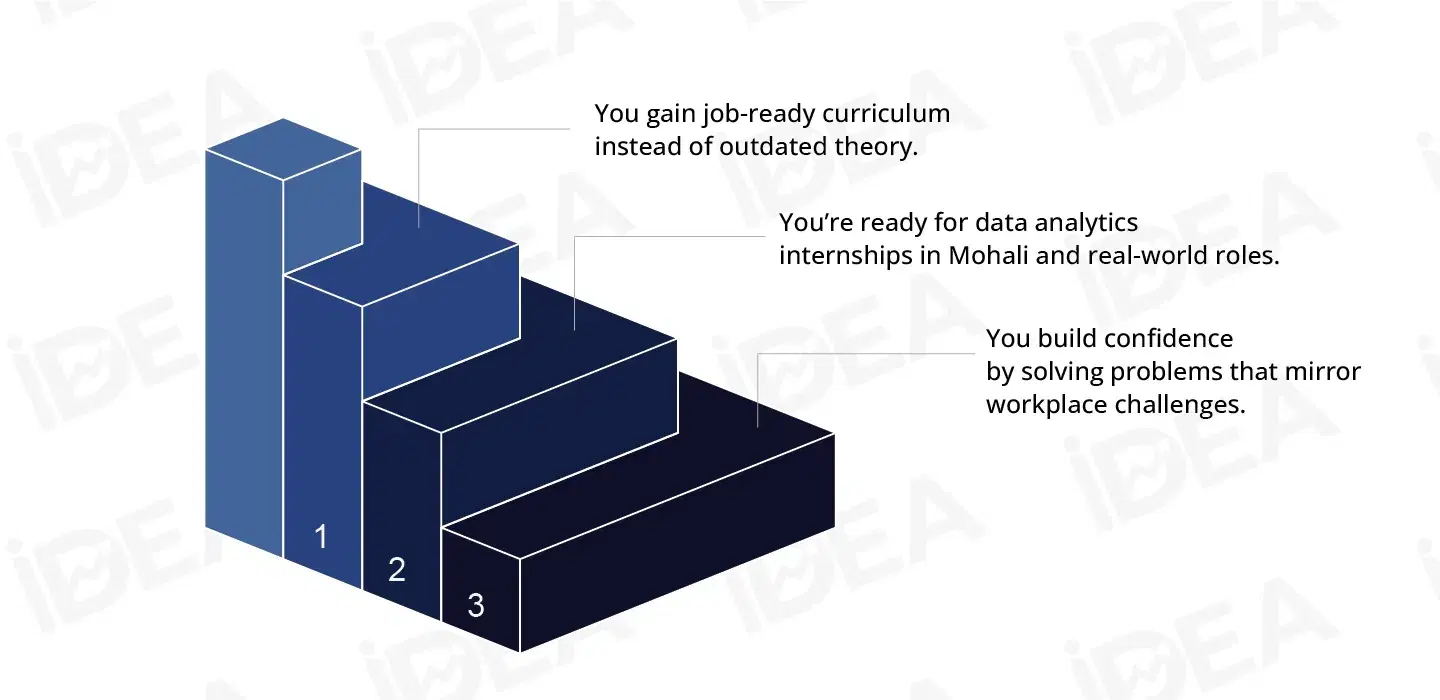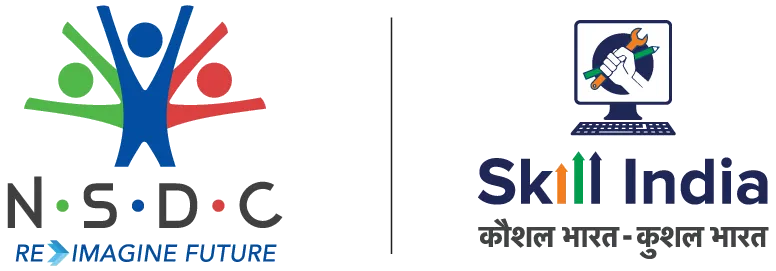Introduction: Standing Out in the Job Market
Every final-year BCA, MCA, or B.Tech student faces the same dilemma: “How do I stand out from the thousands of graduates entering the tech job market?”
The answer lies not in memorizing theory but in mastering job-ready skills that companies actually demand. Employers look for industry-ready data engineers who can solve problems, collaborate in teams, and deliver from Day 1.
That’s where an IDEA institute, often regarded as the best data engineering institute, plays a critical role—bridging the gap between academics and the real world with hands-on, project-driven training.
1. Python: The Language That Powers Data

What you’ll learn:
- Installing Python and setting up PyCharm IDE
- Writing scripts using loops, conditions, and functions
- Using libraries like pandas and NumPy for analysis
Why it matters:
Python is everywhere—AI models, career growth in data analytics, automation, and web apps. From Netflix recommendations to NASA research, Python runs it all.
Example: Imagine you have exam scores for hundreds of students. A Python script can instantly calculate averages or top performers—what would take hours manually.
2. SQL: Speaking the Language of Databases
What you’ll learn:
- Writing queries with SELECT, JOIN, and GROUP BY
- Handling large datasets efficiently
- Filtering, aggregating, and analyzing data
Why it matters:
Every business—banks, hospitals, e-commerce—relies on databases. SQL Python Snowflake training ensures you can access and transform structured data effectively.
Example: A hospital can use SQL queries to quickly find how many patients came in last month and which medicines were prescribed the most.
3. Git: Collaboration Without Chaos
What you’ll learn:
- Understanding Git and GitHub basics
- Managing repositories and tracking versions
- Working on group projects without overwriting work
Why it matters:
Modern workplaces thrive on collaboration. Git ensures multiple developers can work on the same project seamlessly—just like Google Docs, but for code.
Example: If ten engineers are coding together, Git tracks every update, preventing accidental loss and enabling rollback when needed.
Traditional Learning vs. IDEA’s Practical Curriculum
Aspect | Traditional College | IDEA Institute Training |
|---|---|---|
| Focus | Mostly theory, exam-oriented | Practical data projects |
| Tools | Limited classroom exposure | Python, SQL, Git, Cloud tools |
| Real-world practice | Minimal | Case studies & datasets |
| Collaboration | Rarely taught | Git-based teamwork |
| Job readiness | Requires retraining | Directly industry-aligned |
This structured approach is why IDEA is often chosen as the best data engineering institute in India.
Curriculum Breakdown (First Month at IDEA)
Module | Topics Covered | Example Use Case |
|---|---|---|
| Python Basics | Install, loops, conditions | Track daily expenses |
| SQL Basics | SELECT, WHERE, ORDER BY | Find top-selling products in a database |
| Git Basics | Installation, repositories, commits | Manage a group project with multiple contributors |
Why This Matters for Students

By choosing a structured program like cloud data engineering courses at IDEA:
- You gain job-ready curriculum instead of outdated theory.
- You’re ready for data analytics internships in Mohali and real-world roles.
- You build confidence by solving problems that mirror workplace challenges.
Conclusion
Mastering Python, SQL, and Git is not just about learning tools—it’s about becoming an industry-ready data engineer who can contribute from the very first day at work. With the structured, hands-on approach of an IDEA institute, you move beyond theory into confidence, collaboration, and problem-solving—exactly what today’s employers expect.

